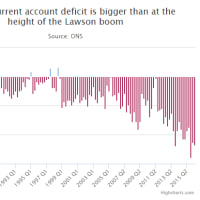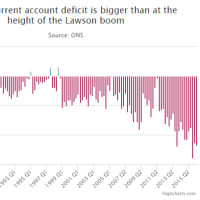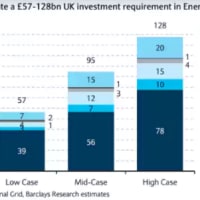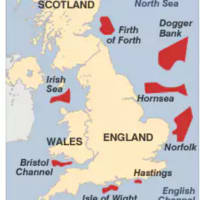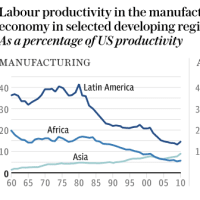なんで今日この記事があるのかわからんのですが…。
なんかこういうところが私をテレグラフ・マンセーにするんですが…。

なんとなく宣伝したくなった(笑)。
Business profile: Sony innovator put Japan on the map
(ビジネス・プロファイル:ソニーのイノベーター、日本を地図に)
Telegraph:28/08/2007
↓ま、気が向いたらヨロシク

BBCが世界の良識?嗤わせるな!
BBC the world's conscience? Cut it out!
FCCJが適切公正なら、日本人は今頃褒め称えている。
Should FCCJ be sound & fair, Japanese are now praising them.
なんかこういうところが私をテレグラフ・マンセーにするんですが…。

なんとなく宣伝したくなった(笑)。
Business profile: Sony innovator put Japan on the map
(ビジネス・プロファイル:ソニーのイノベーター、日本を地図に)
Telegraph:28/08/2007
Akio Morita was born on January 26, 1921 in the industrial Japanese city of Nagoya. He was due to inherit the family sake business but showed little interest and instead spent his time tinkering with electronics equipment. He was soon neglecting his studies to build electronic gadgets.
盛田昭夫は1921年1月26日、日本の工業都市名古屋に生まれた。
彼は家業の酒造りの後を継ぐはずだったが殆ど関心を示さず、その代わりに電気機器をいじって時間を過ごしていた。
電子器具を作る為に学業を疎かにするまで、そう時間はかからなかった。
At university Morita studied physics. During the Scond World War he was a lieutenant in the Japanese Navy. After the war he rebuffed the family sake business and, along with partner Masaru Ibuka, took out a £200 loan to start Tokyo Tshushin Kyogu, housed in a bombed-out department store.
大学で盛田は物理学を専攻した。
第二次世界大戦中、彼は日本海軍の大尉だった。
戦後、彼は家業の酒造りをはねつけて、パートナーの井深大と共に£200を借りて東京通信工業を設立。
会社は爆撃を受けたデパートの中にあった。
Morita’s first product prototype was a specialised rice cooker. In the 1950s he produced the tape recorder. His breakthrough was the transistor radio – although the transistor was a US, not a Japanese, invention.
盛田の最初の試作品は炊飯器だった。
1950年代、彼はテープレコーダーを作った。
ブレークはトランジスター・ラジオだった。
もっとも、トランジスターはアメリカの発明であって日本のではなかった。
Morita had travelled to the US in 1953 to license the transistor technology from Bell Labs. A year later, his company was part of the joint venture with Texas Instruments and Regency Electronics to make the world’s first commercial transistor radio, the Regency TR-1.
1953年、盛田はベル研究所からトランジスター技術のライセンスを供与されるべく渡米した。
一年後、彼の会社はテキサス・イントゥルメンツとリージェンシー・エレクトロニクスの、世界初の商業用トランジスター・ラジオ「リージェンシーTR-1」を生産するための共同事業の一部となっていた。
Morita’s first model for export from Japan was the handsomely designed TR-63, complete with an earphone, produced in 1957.
盛田が初めて日本から輸出したのは、格好良いデザインのTR-63.
イヤホン付きで、1957年に製作された。
In 1958 the company changed its name to Sony Corporation, and was on a roll. It came out with an all-transistor television and then a home videotape recorder. In 1963 Morita moved to the US with his family, a bold move for a man from a country whose businessmen were traditionally isolationist and protectionist.
1958年、同社は社名をソニー株式会社に変え、成功した。
オール・トランジスターのTVで名を上げ、その後はホーム・ビデオテープ・レコーダーで有名になった。
1963年、盛田は家族と共にアメリカに移住した。
ビジネスマンは伝統的に孤立主義者であり保護主義者である国出身の男には、勇気ある動きだ。
He noticed that young people liked listening to music wherever they went and got Sony to produce a portable tape cassette player.
彼はどこへ行っても若者が音楽好きであることに気付き、ソニーに携帯用カセット・プレーヤーを作らせた。
Morita pushed ahead against resistance from inside Sony, persuading colleagues to bring out the Walkman in 1980. There was no market research. “The public does not know what is possible,” he said. “We do.” Morita relentlessly pursued his vision of globalisation. He coined the phrase, “think globally, act locally,” popularised by management gurus Theodore Levitt and Kenichi Ohmae, then, ironically, taken up by anti-globalisation advocates. He kept working, scuba diving, skiing and playing tennis until he was felled by a stroke.
盛田はソニー内部からの抵抗を押し返し、1980年にウォークマンを世に出すよう同僚を説得。
市場調査は一切行わなかった。
「世間は何が可能かなんて知らない」
と彼は言った。
「我々は知っている」。
盛田はグローバライゼーションのビジョンを容赦なく押し進めた。
「グローバルに考えてローカルに動こう」というフレーズを創り出したのは彼だ。
これを広めたのはマネジメントの神様、セオドア・レヴィットと大前研一だ。
その後皮肉にも、反グローバライゼーション提唱者に使われるようになった。
脳卒中で倒れるまで、彼は働き続け、ダイビングを続け、スキーを続け、テニスをやり続けた。
Along with Eiji Toyoda and Soichiro Honda, Morita ranks as one of Japan’s great post-war reconstruction business executives.
豊田英二と本田宗一郎と共に、盛田は日本で最も偉大な戦後復興企業幹部の一人とされている。
Time and again he rejected the safe option and doggedly pursued his instincts.
彼は何度も安全な選択肢を退け、執拗に自分の勘を追求した。
Morita as much as anyone put Japanese innovation on the map.
盛田は誰よりも、日本のイノヴェーションを地図に印した人物だ。
↓ま、気が向いたらヨロシク

 | KGBの世界都市ガイド晶文社このアイテムの詳細を見る |
BBCが世界の良識?嗤わせるな!
BBC the world's conscience? Cut it out!
FCCJが適切公正なら、日本人は今頃褒め称えている。
Should FCCJ be sound & fair, Japanese are now praising them.










